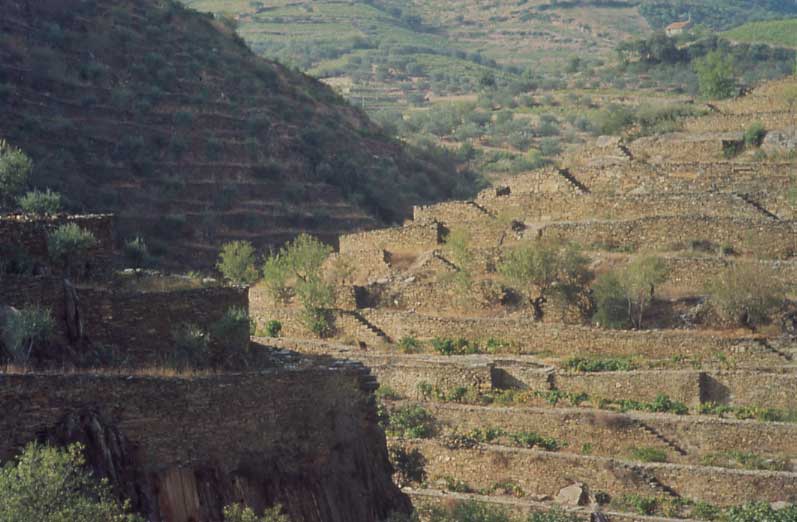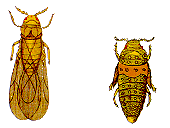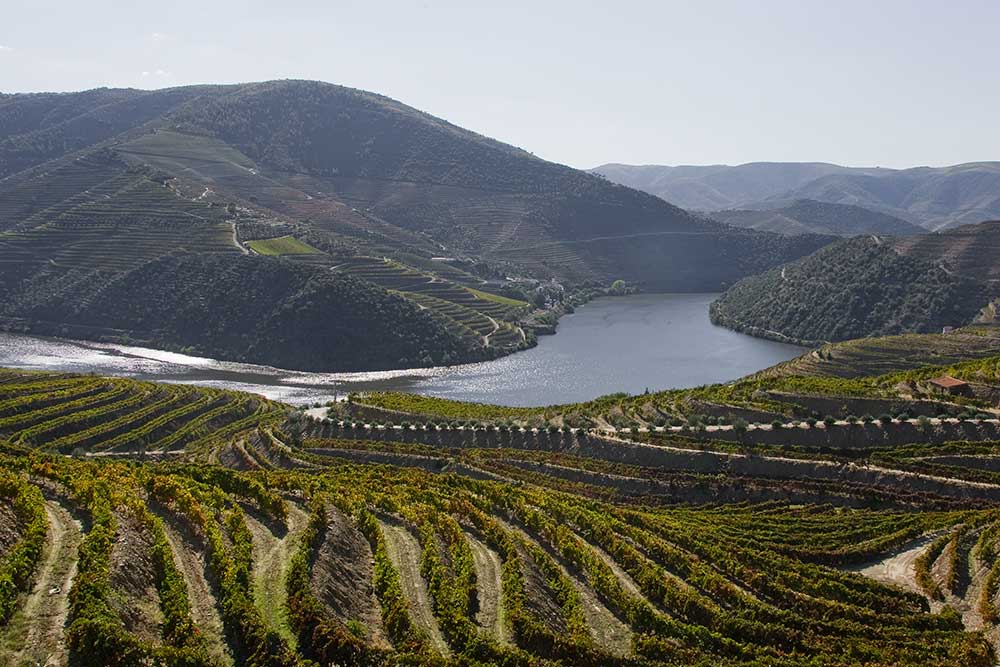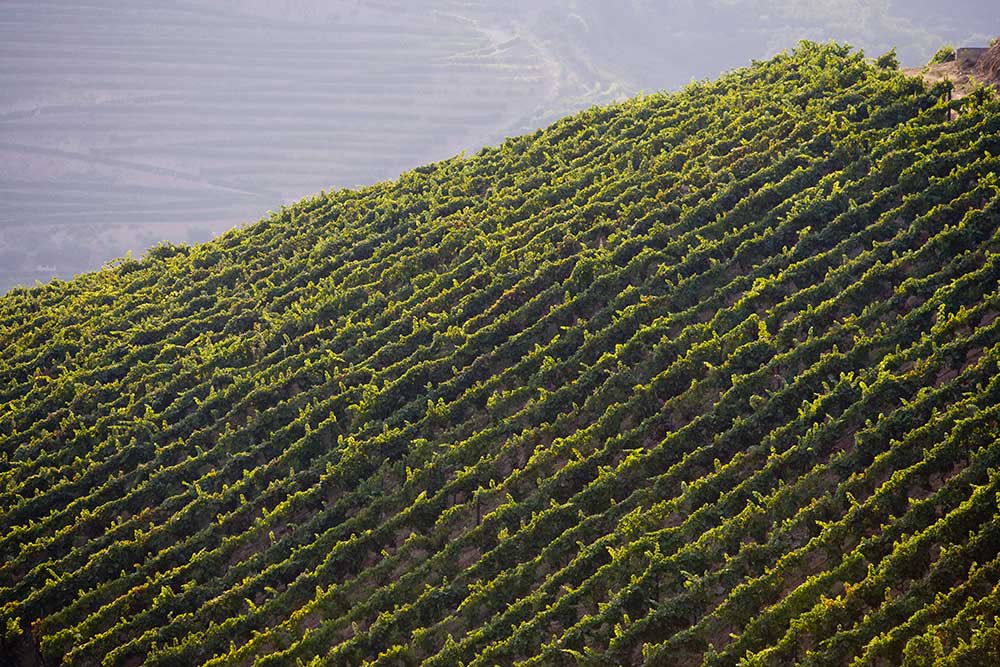
The characteristics of the climate, topography and soil in the Douro affect the degree to which the natural resources can be profitably used and the activities that develop around them.
It was the co-existence of several types of quality wine in the Demarcated Region of the Douro that determined the need for the criteria that are applied to selecting and sharing the musts that are produced in the region.
Thus, of the entire amount of land under vines, only 26 000 ha are authorised for Port Wine. The vines that are considered appropriate for this wine are selected according to a criteria of quality based on a Scoring Method, and classified according to a scale of quality that ranges from A to F. This method considers soil, climatic and agricultural parameters that are important in determining the quality potential of each vineyard. Vines must be at least 5 years old before they can be considered as apt to produce Port Wine. Furthermore, the “benefício” coefficient that is attributed to a vineyard is calculated on the basis of the registered characteristics of each vineyard.
Viticulture, the main activity of most farmers in the region, takes place under particularly rigorous climateric conditions, on stony soil that cannot be put to any other use.
Before a vineyard can be planted on the very steep slopes, the land has to be shaped to form terraces. The manner by which the vines are trained is the one that best overcomes the restraints imposed upon them by the climate, the soil, the needs of the plants and the production goals.
In many cases, almond and olives trees are planted around the edges of the vineyards.
Assessment of vineyards Scoring Method
|
Factors considered |
Minimum score |
Maximum score |
|
Soil and Climate |
|
|
|
Location |
-50 |
600 |
|
Altitude |
-900 |
240 |
|
Slope of land |
1 |
101 |
|
Bedrock |
-400 |
100 |
|
Rough matter |
0 |
80 |
|
Exposure |
-30 |
100 |
|
Shelter |
0 |
60 |
|
Agricultural |
|
|
|
Yield |
0 |
120 |
|
Vine stock |
-150 |
150 |
|
Planting density |
0 |
50 |
|
Training system |
0 |
100 |
|
Age |
0 |
60 |
Classification of parcels
|
Class |
Score |
|
A |
>1200 |
|
B |
between 1001 and 1200 points |
|
C |
between 801 and 1000 points |
|
D |
between 601 and 800 points |
|
E |
between 401 and 600 points |
|
F |
between 201 and 400 points |

Preparation of the land
 Man’s role was fundamental to the creating of the terraces that are so typical of the entire region.
Man’s role was fundamental to the creating of the terraces that are so typical of the entire region.
Before the advent of the phylloxera that first appeared in the region in 1862, vineyards consisted of 1-2 rows of vines planted along small, irregularly-shaped terraces. These terraces were ''torn in strips'', from the top to the bottom of the hillsides, their retaining walls were built with stones and rocks, their height depended on the slope of the land and little earth had to be worked to prepare the soil for planting. The planting density was 3000 to 3500 vines per hectare.
Phylloxera is a microscopic insect - a nematode - that attacks the roots of European vines, causing serious damage to vineyards. Chemicals are not very effective in the fight against this plague. Although in the past carbon sulfide was injected into the soil with some result, it has proven ineffective in most vineyards. The only way to overcome this situation is to use phylloxera-resistant rootstock (American vines) upon which European vines are grafted.
After the phylloxera epidemic, the devastated small terraces, or ''mortórios'', were abandoned and new, wider and steeper terraces were built, with or without supporting walls and allowing for a greater planting density (approximately 6000 vines per hectare). It was then, too, that vineyards were planted according to the natural slope of the land. Mechanization is impossible on these terraces as there are no or few access roads and the steeper vineyards are heavily planted. Because of this and the high costs of labour that this type of terraces implies, these have little by little also been abandoned.


The introduction of mechanisation to the region at the end of the 60''s and early 70''s led to the appearance of a new system.
These are horizontal terraces with eartern supporting walls, each bearing 1-2 rows of vines planted far enough apart for a small tractor to move between them and with a low planting density of some 3000 to 3 500 vines/ha. Given the need of large plots of land for this type of vineyard, it is not suitable for smallholdings.
Even more recently, as an alternative to the wide terraces, vines are being planted in vertical rows rising up the steeper hillsides (the so-called “vinhas ao alto”). With a planting density similar to that of traditional vineyards, some 4 500 to 5 000 plants per/ha, this system is better adapted to small plots of land with up to 40% slopes and can be worked by mechanical means using pulleys or specialised tractors.
Methods for Training the Vines
Traditionally, the vines in the region are grown low, close to the ground. The single or double Guyot and unilateral and bilateral cordons are the methods most frequently used for training the vines. Trellises may be occasionally found but this method is not commonly used nor is it permitted for Port Wine.
|
Training Method |
Nº of buds/vine |
Type of Pruning |
|
Simple Guyot |
5 - 6 |
Short |
|
Double Guyot |
8 - 12 |
Mixed |
|
Unilateral cordon |
8 |
Mixed |
|
Bilateral cordon |
12 |
Mixed |
Although traditionally vines reach a height of 1 metre, today the top may be as much as 1m30 to 1m60 above the ground. The first wire is placed at a height of approximately 0m60 and this is followed by a single or double wire 30-35 cm above it, as a first support for the shoots, and the last wire, the top one, at 1m40 to 1m50 from the ground.
Cultivation Practices
The cultivation practices (digging, scarifying, weeding, debudding, fertilizing, spraying against fungi and pests, pruning and grafting) are the same as those used in other winemaking regions, although these are much more difficult to perform in the Douro due to the rigorous climate and the topography of the region.
Weed Control
Mixed techniques in which the soil is dug over around the vines (by mechanical means when possible) and herbicides are applied. Usually, two applications of herbicide and two or three diggings.
Digging in: Few farmers do not apply herbicides, limiting themselves to digging in the weeds. Others may apply herbicides around the vines and dig in the weeds in the space between rows.
Cultivation
|
|
Jan |
Feb |
Mar |
Apr |
May |
Jun |
Jul |
Aug |
Sep |
Oct |
Nov |
Dec |
|
Fertilization |
|
x |
x |
|
|
|
|
|
|
|
|
|
|
Tying of shoots to wires |
|
|
|
x |
x |
x |
|
|
|
|
|
|
|
Digging around vines |
|
|
x |
x |
|
|
|
|
|
|
|
|
|
Cont. ripening/Vintage |
|
|
|
|
|
|
|
x |
x |
x |
|
|
|
Removal of excess shoots |
|
|
|
|
|
|
x |
|
|
|
|
|
|
Debudding |
|
|
|
|
x |
x |
|
|
|
|
|
|
|
Laying out of training wires and posts |
|
|
x |
x |
|
|
|
|
|
|
|
|
|
Grafting |
|
|
x |
|
|
|
|
|
|
|
|
|
|
Digging around vines |
x |
|
|
|
|
|
|
|
|
|
|
x |
|
Application of herbicides |
|
x |
x |
|
|
x |
x |
|
|
|
|
|
|
Pruning |
x |
x |
|
|
|
|
|
|
|
|
|
x |
|
Plowing of soil between rows |
|
|
|
|
|
|
x |
x |
|
|
|
|
|
Replanting |
x |
x |
|
|
|
|
|
|
|
|
|
|
|
Spraying against fungi and pests. |
|
|
|
x |
x |
x |
|
|
|
|
|
|
Varietals
The wide range of types of vines that exist in the Douro and that adapt themselves to different climatic conditions is proof of the Region’s ability to offer optimal conditions for vines. The varietals, most of them native to the region, are grafted onto different types of rootstock, chosen according to their compatibility with the varietal and the characteristics of the soil in which they are to be planted.
The types of vines that may be planted in the Region, as is the case in all demarcated regions, is regulated by a Decree-Law that lists the authorized varietals, those that are recommended, and the percentage according to which each may be planted.
Today, winemakers have chosen to plant fewer, carefully chosen varietals in the new vineyards. The most noteworthy red wine varietals are: Tinta Amarela, Tinta Barroca, Tinta Roriz, Touriga Francesa, Touriga Nacional and Tinto Cão; predominant white grape varietals are Malvasia Fina, Viosinho , Donzelinho and Gouveio.
As regards productivity, the vines grown in the Region are not known for their high yield. The maximum authorized yield is of 55 hl/ha (approximately 7 500 Kg/ha). Average yield is of approximately 30 hl/ha (4 100 kg/ha).
|
White Grape Varieties |
|
Red Grape Varieties |
|
|
Minimum 60% |
Maximum 40% |
Minimum 60% |
Maximum 40% |
|
Esgana Cão |
Arinto |
Bastardo |
Cornifesto |
|
Folgasão |
Boal |
Mourisco Tinto |
Donzelinho |
|
Gouveio ou Verdelho |
Cercial |
Tinta Amarela |
Malvasia |
|
Malvasia Fina |
Côdega |
Tinta Barroca |
Periquita |
|
Rabigato |
Malvasia Corada |
Tinta Francisca |
Rufete |
|
Viosinho |
Moscatel Galego |
Tinta Roriz |
Tinta Barca |
|
|
Donzelinho Branco |
Tinto Cão |
|
|
|
Samarrinho |
Touriga Francesa |
|
|
|
|
Touriga Nacional |
|
Rootstock
The most frequently used rootstock following the phylloxera invasion was the Rupestris du Lot. Later, hybrids of Berlandieri with Riparia (420-A, SO4) and of Berlandieri with Rupestris such as R99, R 11O and 1103 P, and also 196-17, were introduced. The former are used in deeper and cooler soils and the latter in hot, dry and rocky slopes